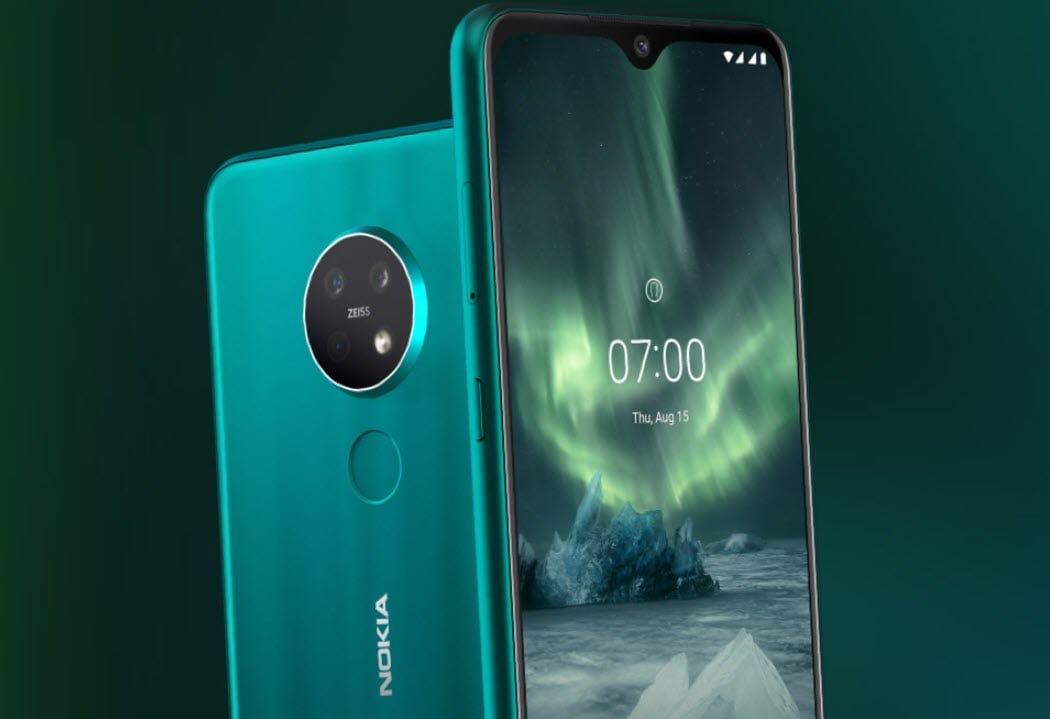Nokia was arguably the biggest name in the mobile phone industry at the turn of the century. Still, with the advent of Android and iOS even before that, Nokia’s stock began to fall as they didn’t pivot with the industry at the time. There was a time when mobiles were synonymous with Nokia. Their’ connecting people’ moniker seemed accurate as nearly every person had a Nokia mobile phone and was addicted to Bounce or snake games.
While Nokia failed to adapt at the beginning of the smartphone revolution — following their acquisition by HMD Global — they did make a comeback with a lineup of Android device, most of which targeted the budget-segment.
Nokia 6 and 7 were among the lineup of devices, and here we’re going to compare the third-generation of the two devices — Nokia 6.2 and Nokia 7.2 — on five parameters.
Also read: JPEG vs PNG: The difference between Lossy and Lossless compression
Display And Design
Both the phones have similar displays at 6.3 inches (FHD+) with a teardrop notch and look pretty similar. The screens are crisp with a peak brightness of 500nits. Also, both of them come with dual nano sims. Both the devices come with Corning Gorilla Glass 3. Nokia 7.2 has a polymer composite chassis while the Nokia 6.2 has a glass back.
Memory
One of the main difference between the devices is in terms of the hardware. Nokia 7.2’s base version is equipped with 4GB RAM and 64GB of internal storage with the costlier variant featuring 6GB RAM and 64GB storage version.
The Nokia 6.2 has a base variant with 32GB storage and 4GB RAM, and the costlier one gets 64GB storage with 4GB RAM.

So, if you’re a power user who multi-tasks a lot on their smartphone, Nokia 7.2’s costlier version might be the one for you, more so when you couple it with the chipset on offer.
Processors
Nokia 7.2 comes with a more powerful octa-core Snapdragon 660 that clocks at speeds up to 2.2GHz and is supported by Adreno 512 GPU that can take more demanding tasks than the relatively less-powerful Snapdragon 636 powering Nokia 6.2, which clocks at speeds up to 1.8GHz; supported by Adreno 509.
Also read: 3 reasons why you should reconsider your decision to buy the new Moto Razr
Camera
Both the devices come with a triple-lens setup with some differences in the lens used. The 7.2 comes with a whopping 48MP primary camera at f/1.79 aperture, alongwith a 5MP depth sensor and an 8MP wide-angle camera. The front features a 20MP camera.
The 6.2, sports a 16MP primary camera (f/1.8 aperture) with an 8MP wide-angle camera and a 5MP depth sensor. It also gets an 8MP camera at the front.

If you’re a photography buff and love taking selfies, the numbers mentioned above draw a clear picture of which device comes out on top. Nokia 7.2 features a better primary lens at the rear as well as the front.
Battery and OS
Both the phones are backed by a 3500mAh battery and run Android 9 Pie out-of-the-box, which will be upgraded to Android 10 soon. Nokia is quick with security updates, rolled out a few days or a week after Google releases them for the Pixel devices.
Both the devices are a part of the Android One programme, which guarantees major OS updates for the next two years and security patches for the next three.
Final Verdict
At the time of writing, the Nokia 7.2 (6GB) is available in India for INR 16,249, and the Nokia 6.2 (4GB) is available for INR 12,199. While both phones are good if you want a clean interface with minimal clutter, the Nokia 7.2 offers a better deal if you’re looking for durability and longevity from your phone.
In addition to the processing power, the 7.2 also offers better camera quality and seems like a better value for money proposition overall. However, if you’re on a tight budget, Nokia 6.2 won’t disappoint either as it’s not bad, but the 7.2 is only better.
Here is a table with some relevant specifications.
| Category | Nokia 6.2 | Nokia 7.2 |
|---|---|---|
| Display | 6.3” Full HD+ screen with PureDisplay | 6.3” Full HD+ screen with PureDisplay |
| Chipset | Snapdragon 636 chipset; Octa-core (4×1.8 GHz Kryo 260 Gold & 4×1.6 GHz Kryo 260 Silver) GPU Adreno 509 | Snapdragon 660; Octa-core (4×2.2 GHz Kryo 260 Gold & 4×1.8 GHz Kryo 260 Silver) GPU Adreno 512 |
| Rear Camera | 16 MP, f/1.8, 27mm (wide), 1.0µm, PDAF 8 MP, f/2.2, 13mm (ultrawide), 1/4.0″, 1.12µm 5 MP, f/2.4, 1/5.0″, 1.12µm, depth sensor | 8 MP, f/1.8, (wide), 1/2.0″, 0.8µm, PDAF 8 MP, f/2.2, 13mm (ultrawide), 1/4.0″, 1.12µm 5 MP, f/2.4, 1/5.0″, 1.12µm, depth sensor |
| Selfie Camera | 8 MP, f/2.0, 1/4″, 1.12µm | 20 MP, f/2.0, (wide), 1/3″, 0.9µm |
| Memory | 3GB/4GB RAM, 32GB/64GB built-in storage | 4GB/6GB RAM, 64GB/128GB built-in storage |
| Connectivity | Wi-Fi 802.11 b/g/n/ac; Bluetooth 5.0 | Wi-Fi 802.11 b/g/n/ac; Bluetooth 5.0 |
| Battery | 3500 mAh | 3500 mAh |

Also read: How to block your Jio sim? 2 ways explained






